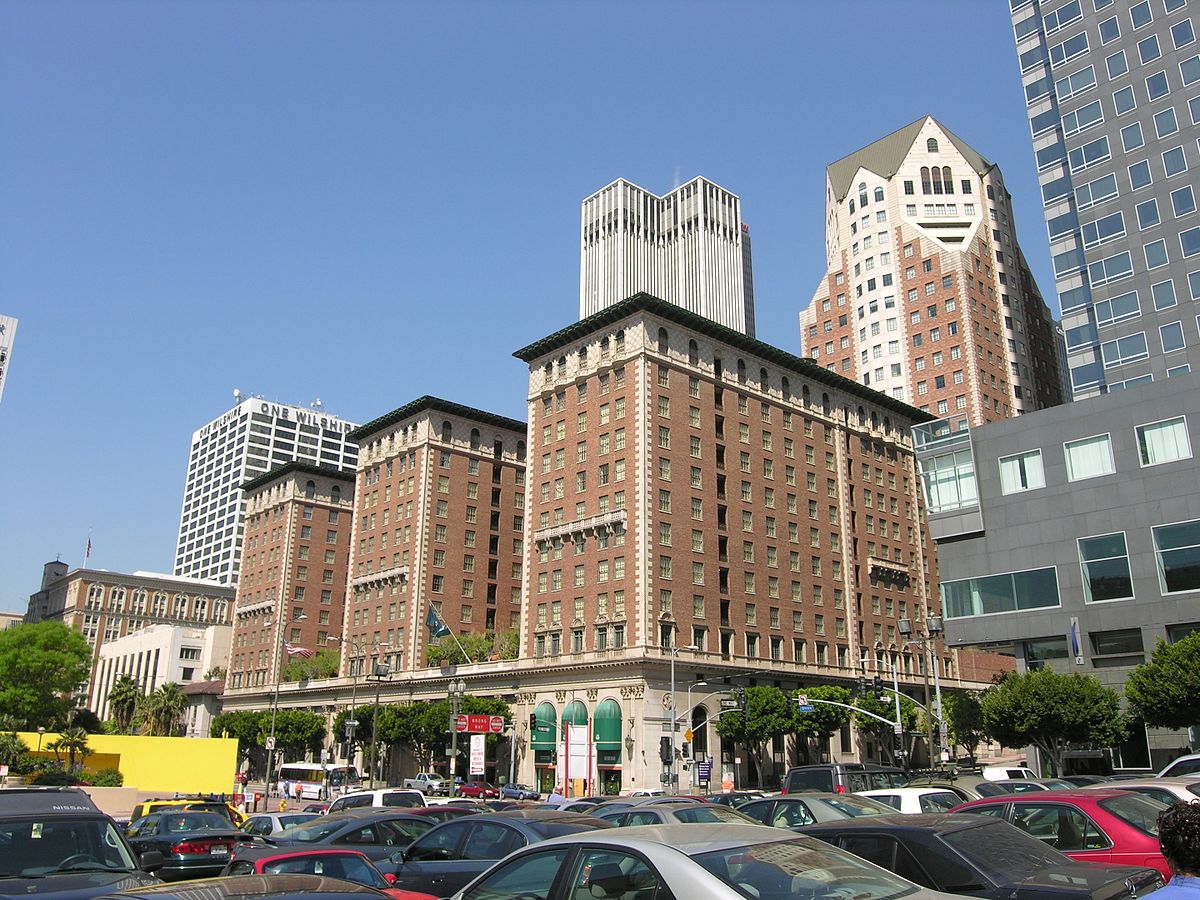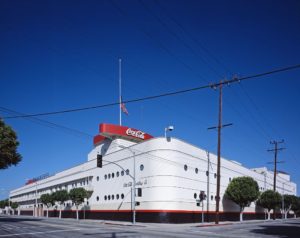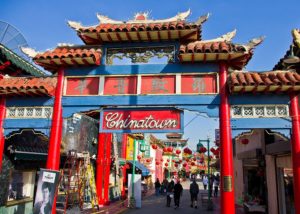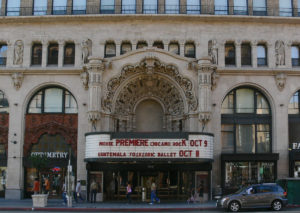Cuando se abrió por todo lo alto en 1923, el Hotel Biltmore era el mayor hotel al oeste de Chicago. La firma Schultze and Weaver, que también era responsable del Hotel Waldorf Astoria de Nueva York y otros edificios prominentes del centro de Los Ángeles, diseñó el Biltmore en el estilo arquitectónico Beaux Arts con toques de Renacimiento.
Hasta el día de hoy, la fachada del hotel en Olive Street, en Pershing Square, sigue siendo uno de los mejores ejemplos de este tipo de arquitectura en Los Ángeles. Las grandes salas de reuniones del hotel son una opulenta y elegante mezcla de estilos europeos, como el renacentista, el barroco, el neoclásico y el morisco. El muralista italiano Giovanni Smeraldi decoró muchos de los lujosos salones de banquetes del hotel.
El vestíbulo original (ahora el «Rendezvous Court«) contiene un techo de vigas moras y una gigantesca escalera barroca española que conduce a una galería de 350 pies de largo. Varios salones de baile, cada uno profusamente decorado, conducen a la galería.
El actual vestíbulo de la entrada del hotel en Grand Avenue todavía tiene sus paredes originales de travertino y paneles de roble, así como el gran techo artificial con claraboya, reflejado en la alfombra.
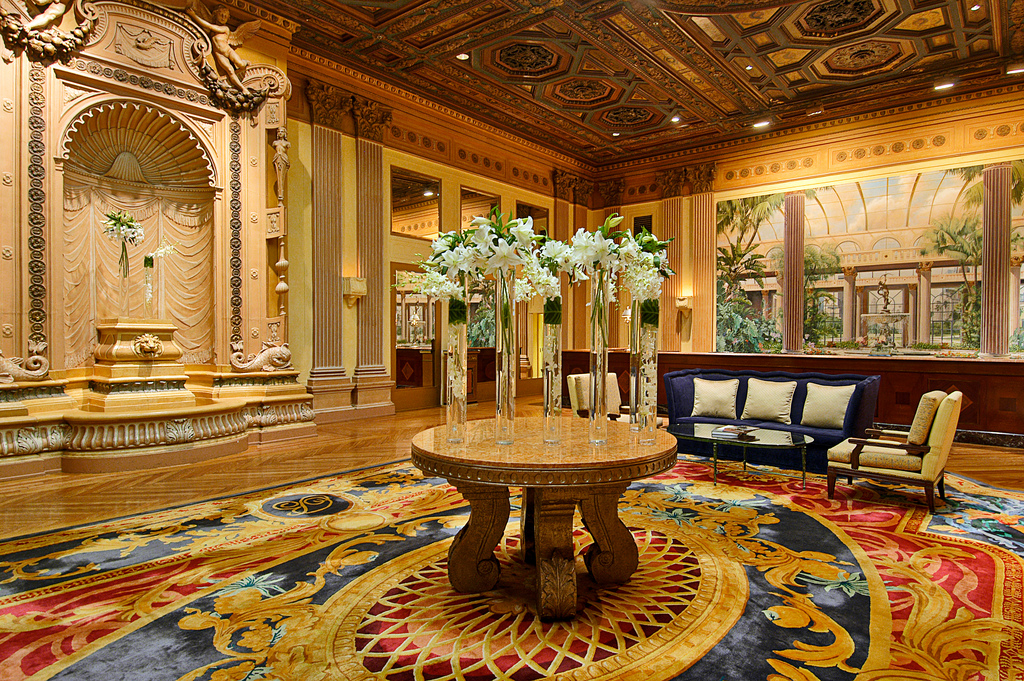
Cada salón de baile en el nivel de la Galería está tematizado. La Sala Esmeralda fue una vez el principal comedor de huéspedes del hotel; su decoración presenta imágenes de caza y cosecha, con animales y peces pintados a mano en las vigas del techo de yeso. La Sala Tiffany era antiguamente un pasillo abierto que se utilizaba como punto de bajada para las funciones del Crystal Ballroom. Ahora cerrado, el elegante espacio se centra en la exploración, con esculturas en relieve y paneles que representan a la Reina Isabel I de Castilla, y a Cristóbal Colón y otros exploradores españoles del Nuevo Mundo. El Salón Dorado, que en su día fue un comedor para invitados de élite, tiene compartimentos ocultos para licores de la época de la Prohibición y paneles a lo largo del techo para que los fotógrafos de la prensa puedan tomar fotos del evento que se celebra a continuación. Está decorada con un techo de yeso fundido en oro, paneles de madera engrasados a mano y nueve ventanas con espejos a lo largo de tres lados.
La Galería Sur está pintada con frisos florales inspirados en la decoración de la antigua Pompeya romana, y presenta un techo abovedado, balaustradas de mármol y pesados muelles romanos. Las puertas de hierro forjado pintadas en oro se abren a una escalera que baja al Biltmore Bowl.
También es interesante el gimnasio y la piscina cubierta del hotel, que fue modelada según las cubiertas de los lujosos transatlánticos de la década de 1920. Los adornos de latón macizo de las ventanas, puertas y barandillas, las tumbonas de teca y los mosaicos italianos colocados a mano en las paredes y en la piscina son originales.
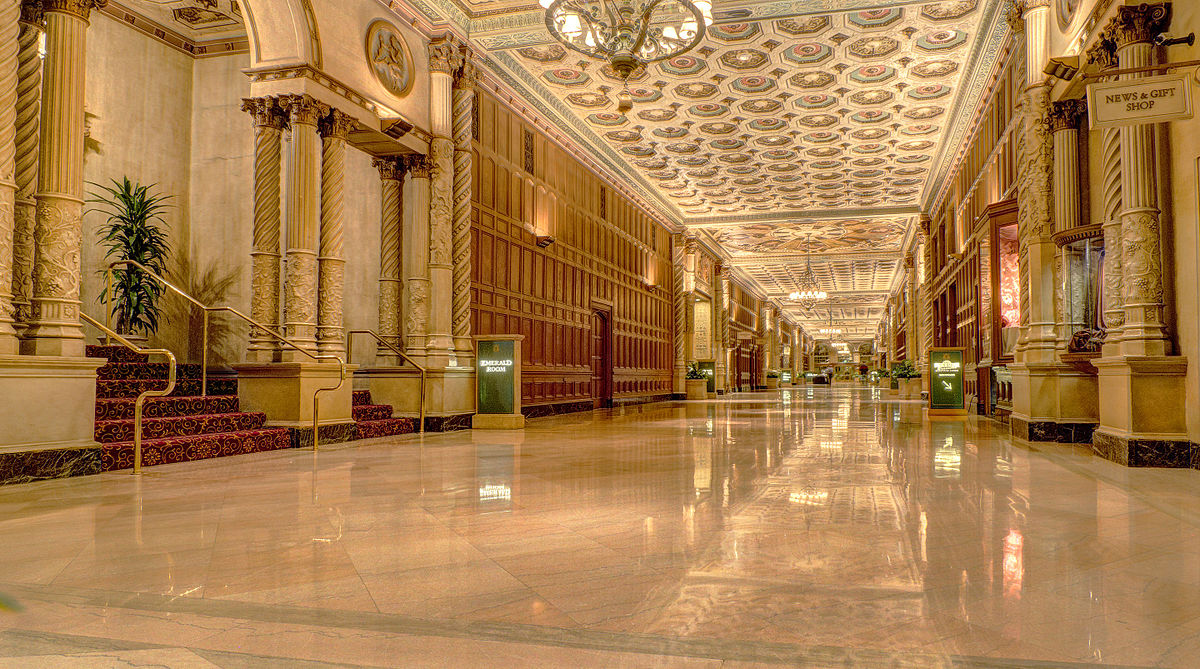
El hotel Millenium Biltmore está situado en un lugar privilegiado en el centro de Los Ángeles, en pleno distrito financiero de la ciudad. El hotel está a una calle del Museo de Arte Contemporáneo, del Walt Disney Concert Hall, del complejo deportivo y de entretenimiento de L.A. y del Centro de Música. Además, es fácil llegar a Hollywood, a la playa, a Beverly Hills y a los principales aeropuertos.
El interior del hotel puede verse muy bien en la película ‘Cazafantasmas’ (Ivan Reitman, 1984); y es que a pesar de que la película está ambientada en New York, el interior del hotel donde los Ghostbusters hacen su primera entrada triunfal nos es otro que el del Biltmore. El hotel ha aparecido en otras muchas películas, tales como ‘Chinatown’ (1974), ‘Despedida de soltero’, (1984), ‘The Game’ (1997), ‘Heartbreakers (2001)’, ‘In the Line of Fire’ (1993), ‘Independence Day ‘ 1996), The Italian Job (2003) o ‘Spider-Man’ (2002).
